Abstract
OBJECTIVES: Many establishments serve alcoholic beverages to obviously intoxicated patrons despite laws against such sales. To guide the development of interventions to reduce these illegal alcohol sales, this study used actors feigning intoxication to determine whether servers recognized obvious signs of intoxication and to assess the tactics servers used when dealing with intoxicated patrons. METHODS: Male actors ages 30 to 50 acted out signs of obvious intoxication as they attempted to purchase alcoholic beverages. If served during the first attempt, these pseudo-intoxicated buyers made second purchase attempts during the same visit. Observers accompanied the actors; after each visit, actors and observers recorded the servers' behavior and comments. RESULTS: Alcoholic beverages were served to actors portraying intoxicated patrons at 68% of first purchase attempts and 53% of second purchase attempts (62% of a total of 106 purchase attempts). The most common refusal technique was a direct refusal (68% of refusals), made with either no excuse or with reference to the actors' apparent intoxication level. Servers' second most commonly used refusal technique was offering alcohol-free beverages, such as coffee or water (18% of refusals). CONCLUSIONS: Further research is needed to determine why servers who recognize intoxication serve alcoholic beverages and what training, outlet policies, and external pressures are needed to reduce illegal alcohol sales to obviously intoxicated patrons.
Full text
PDF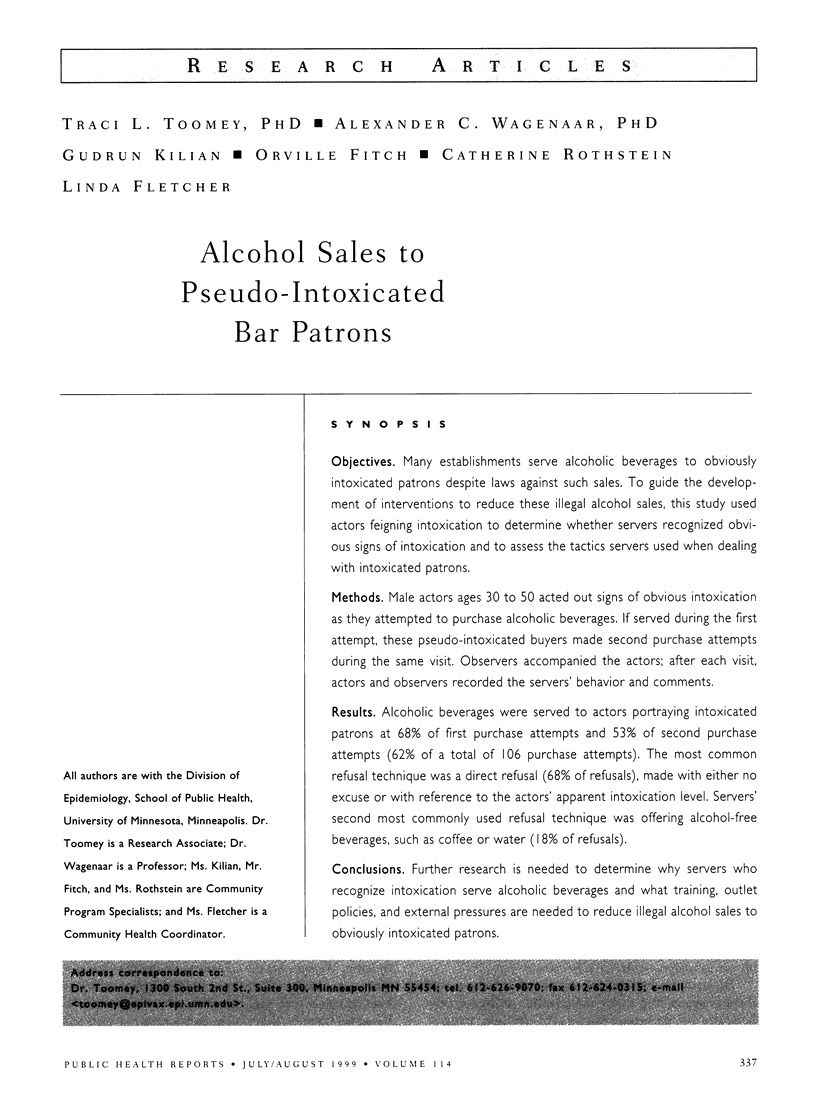
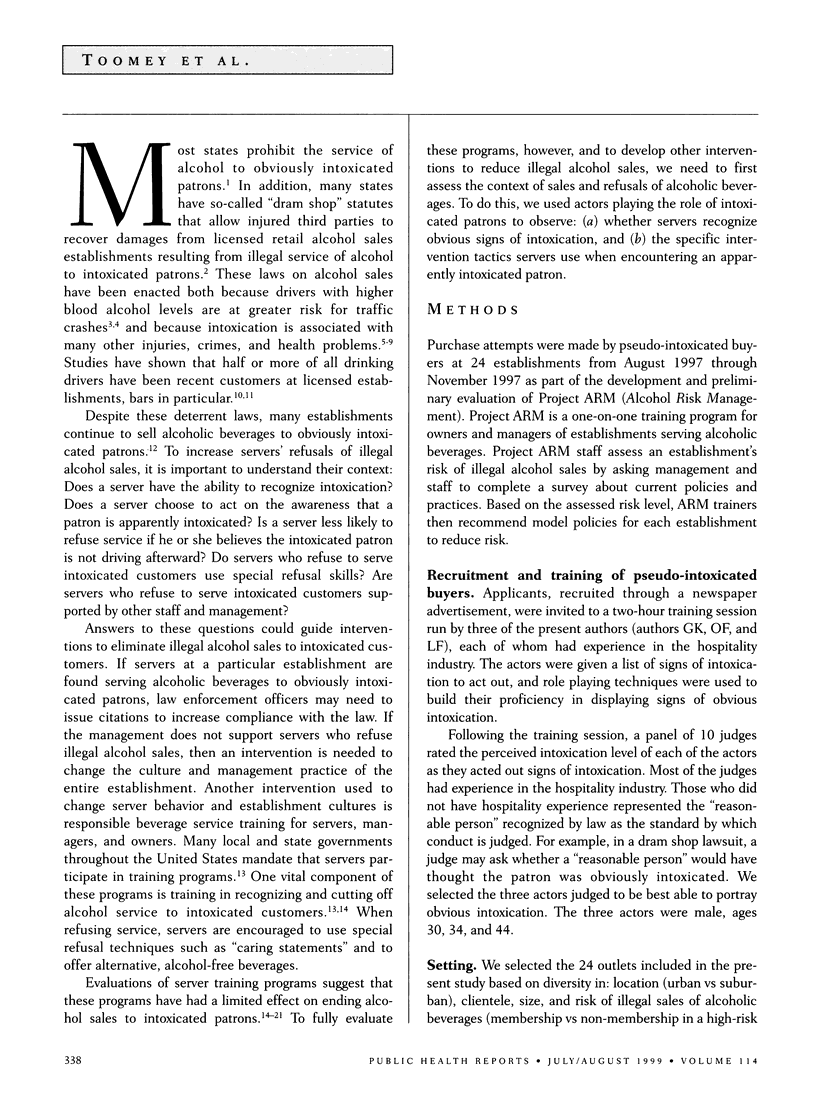
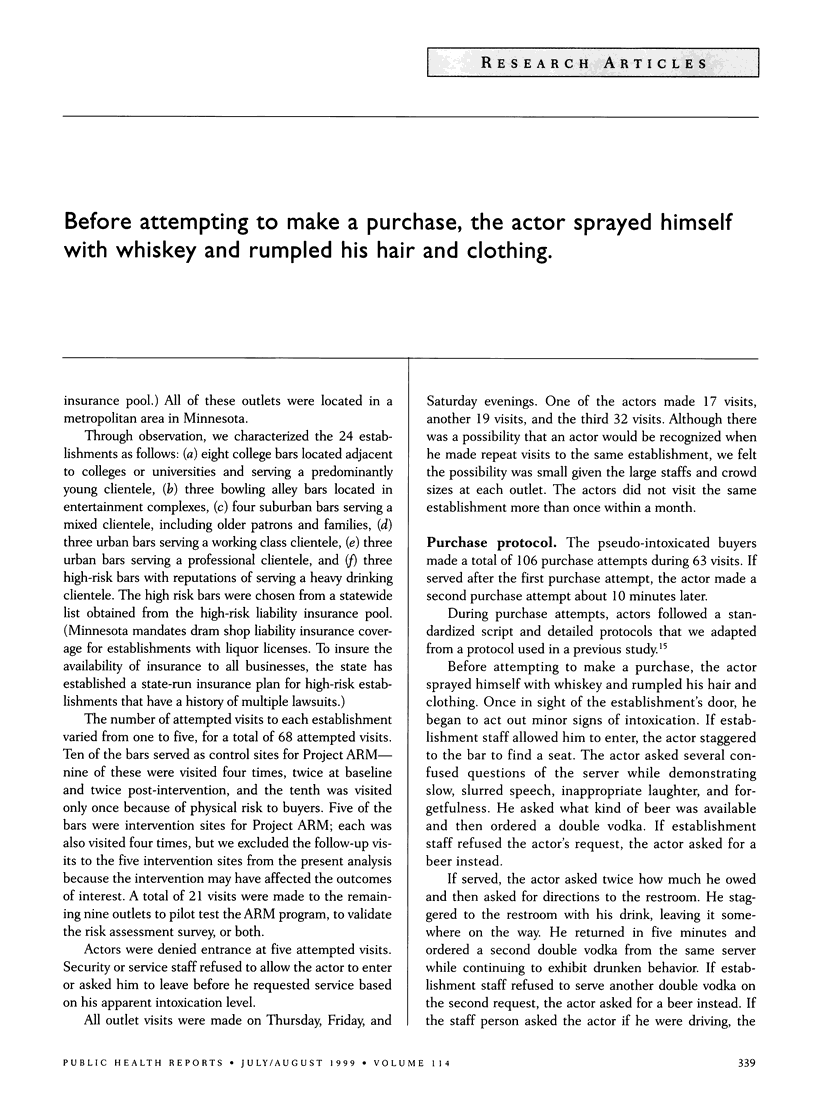
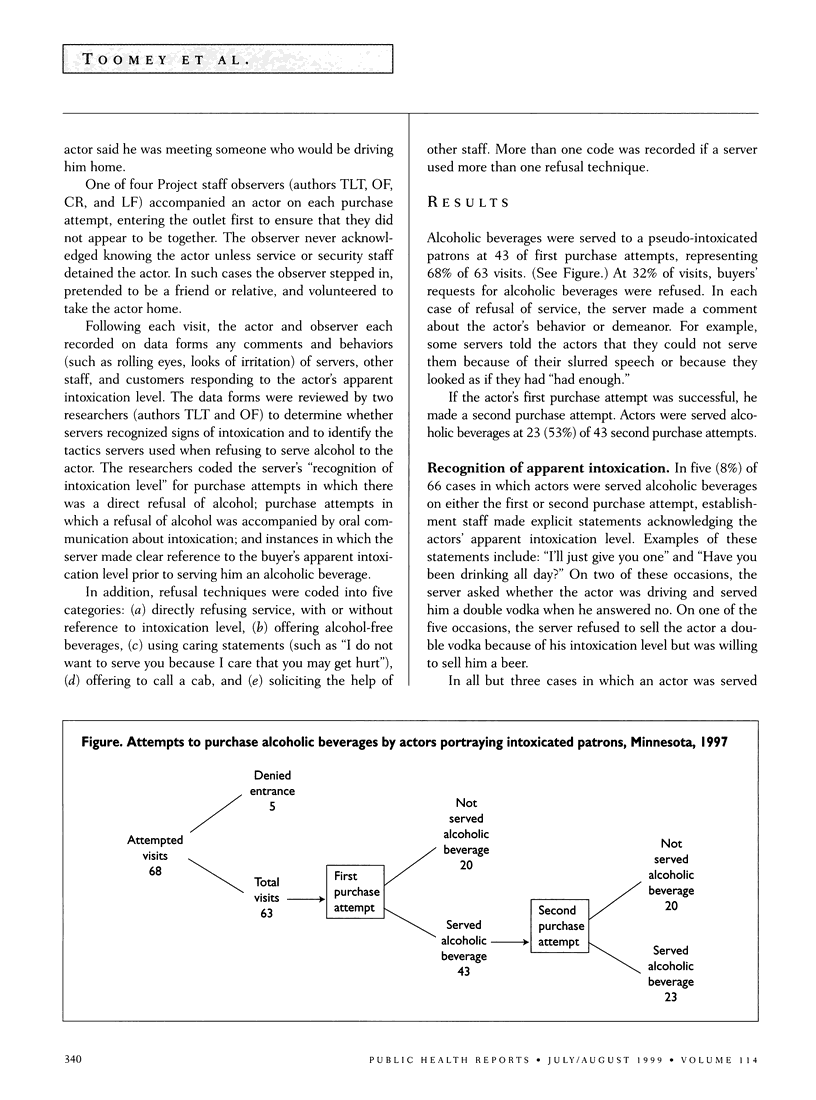
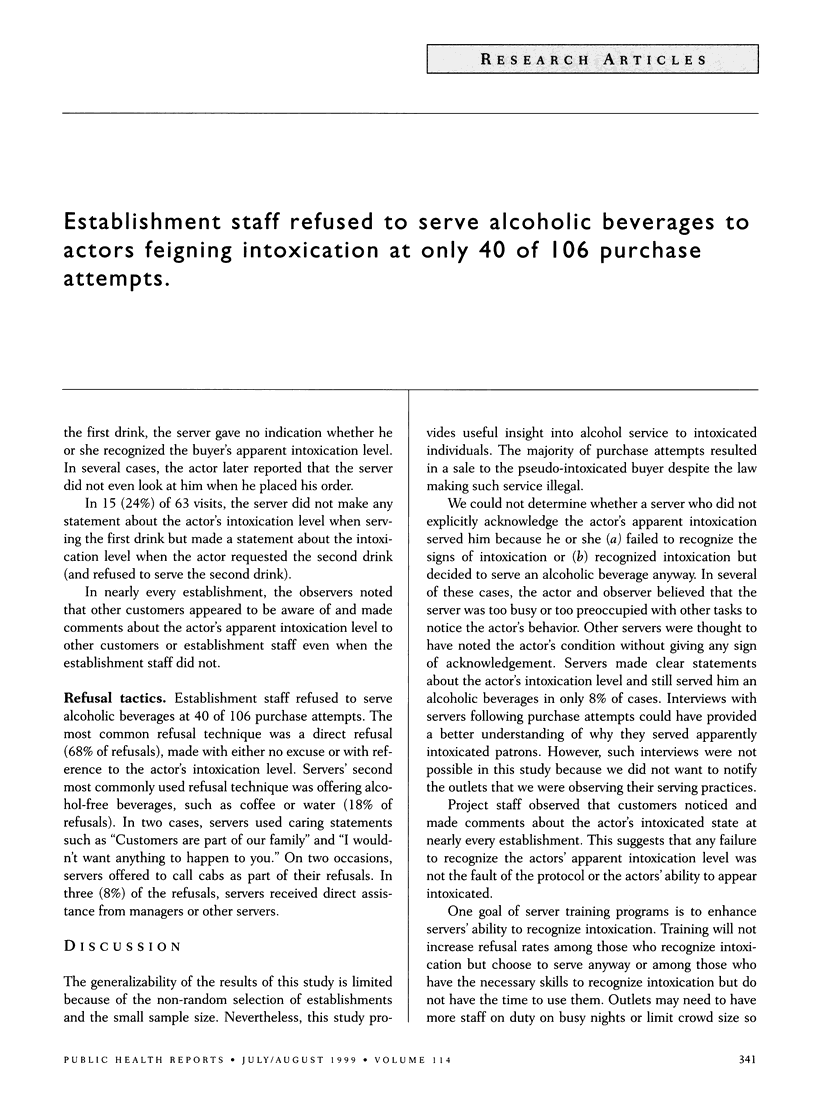
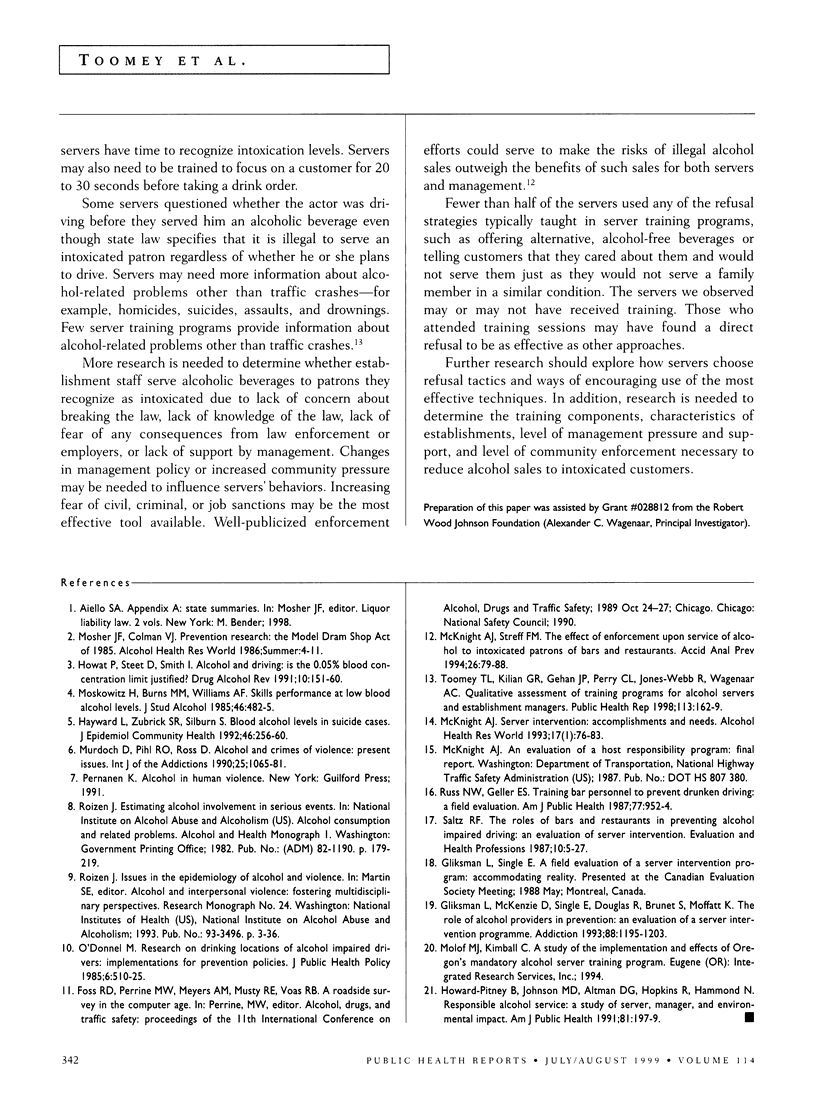
Selected References
These references are in PubMed. This may not be the complete list of references from this article.
- Gliksman L., McKenzie D., Single E., Douglas R., Brunet S., Moffatt K. The role of alcohol providers in prevention: an evaluation of a server intervention programme. Addiction. 1993 Sep;88(9):1195–1203. doi: 10.1111/j.1360-0443.1993.tb02142.x. [DOI] [PubMed] [Google Scholar]
- Hayward L., Zubrick S. R., Silburn S. Blood alcohol levels in suicide cases. J Epidemiol Community Health. 1992 Jun;46(3):256–260. doi: 10.1136/jech.46.3.256. [DOI] [PMC free article] [PubMed] [Google Scholar]
- Howard-Pitney B., Johnson M. D., Altman D. G., Hopkins R., Hammond N. Responsible alcohol service: a study of server, manager, and environmental impact. Am J Public Health. 1991 Feb;81(2):197–199. doi: 10.2105/ajph.81.2.197. [DOI] [PMC free article] [PubMed] [Google Scholar]
- Howat P., Sleet D., Smith I. Alcohol and driving: is the 0.05% blood alcohol concentration limit justified? Drug Alcohol Rev. 1991;10(2):151–166. doi: 10.1080/09595239100185211. [DOI] [PubMed] [Google Scholar]
- Moskowitz H., Burns M. M., Williams A. F. Skills performance at low blood alcohol levels. J Stud Alcohol. 1985 Nov;46(6):482–485. doi: 10.15288/jsa.1985.46.482. [DOI] [PubMed] [Google Scholar]
- Murdoch D., Pihl R. O., Ross D. Alcohol and crimes of violence: present issues. Int J Addict. 1990 Sep;25(9):1065–1081. doi: 10.3109/10826089009058873. [DOI] [PubMed] [Google Scholar]
- Russ N. W., Geller E. S. Training bar personnel to prevent drunken driving: a field evaluation. Am J Public Health. 1987 Aug;77(8):952–954. doi: 10.2105/ajph.77.8.952. [DOI] [PMC free article] [PubMed] [Google Scholar]
- Toomey T. L., Kilian G. R., Gehan J. P., Perry C. L., Jones-Webb R., Wagenaar A. C. Qualitative assessment of training programs for alcohol servers and establishment managers. Public Health Rep. 1998 Mar-Apr;113(2):162–169. [PMC free article] [PubMed] [Google Scholar]


